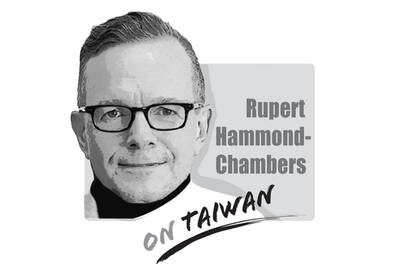Youth must have a voice
The Ministry of Education’s attempt to interfere with political discussion on the PTT Internet forum (“Notice to Ministry sparks outrage,” Nov. 4, page 1) marks yet another attack on free speech by the Chinese Nationalist Party (KMT) government.
This comes just after an Internet user faced threats of legal action for producing a spoof version of the “Hu’s girls” promotional video for the campaign of Taichung Mayor Jason Hu (胡志強), the KMT candidate for the Greater Taichung mayoral election (“Prosecutors say no suit against altered Hu video,” Nov. 3, page 3).
Watching the two videos, it is difficult to actually tell which one is the parody.
These two events are part of a series of incidents since the KMT returned to power in 2008 where the government has tried to limit free speech. They also reflect the paternalistic attitudes of many government officials, whose thinking remains rooted in the Martial Law era.
Taiwan has made great advances in developing a free and open society since the end of Martial Law in 1987 and the subsequent onset of democracy.
However, some universities still place restrictions on freedom of speech and there are still military instructors on university campuses and in some high schools.
In spite of these hangovers from the Martial Law era, the young have strong opinions and are not afraid to express them.
The Wild Strawberry Movement in 2008 shattered the image of Taiwan’s youths as docile and disengaged from society. Earlier this year, students at Tainan Senior Girls High School engaged in a mass protest over the right to wear shorts to school.
Many young Taiwanese are actively engaged in politics. They have ideas and opinions that will shape the future of the nation.
Taiwanese lived through four decades of the White Terror. Taiwan’s youth must speak out to ensure that they don’t experience White Terror 2.0.
DAVID REID
Taichung
The gutting of Voice of America (VOA) and Radio Free Asia (RFA) by US President Donald Trump’s administration poses a serious threat to the global voice of freedom, particularly for those living under authoritarian regimes such as China. The US — hailed as the model of liberal democracy — has the moral responsibility to uphold the values it champions. In undermining these institutions, the US risks diminishing its “soft power,” a pivotal pillar of its global influence. VOA Tibetan and RFA Tibetan played an enormous role in promoting the strong image of the US in and outside Tibet. On VOA Tibetan,
Sung Chien-liang (宋建樑), the leader of the Chinese Nationalist Party’s (KMT) efforts to recall Democratic Progressive Party (DPP) Legislator Lee Kun-cheng (李坤城), caused a national outrage and drew diplomatic condemnation on Tuesday after he arrived at the New Taipei City District Prosecutors’ Office dressed in a Nazi uniform. Sung performed a Nazi salute and carried a copy of Adolf Hitler’s Mein Kampf as he arrived to be questioned over allegations of signature forgery in the recall petition. The KMT’s response to the incident has shown a striking lack of contrition and decency. Rather than apologizing and distancing itself from Sung’s actions,

US President Trump weighed into the state of America’s semiconductor manufacturing when he declared, “They [Taiwan] stole it from us. They took it from us, and I don’t blame them. I give them credit.” At a prior White House event President Trump hosted TSMC chairman C.C. Wei (魏哲家), head of the world’s largest and most advanced chip manufacturer, to announce a commitment to invest US$100 billion in America. The president then shifted his previously critical rhetoric on Taiwan and put off tariffs on its chips. Now we learn that the Trump Administration is conducting a “trade investigation” on semiconductors which
By now, most of Taiwan has heard Taipei Mayor Chiang Wan-an’s (蔣萬安) threats to initiate a vote of no confidence against the Cabinet. His rationale is that the Democratic Progressive Party (DPP)-led government’s investigation into alleged signature forgery in the Chinese Nationalist Party’s (KMT) recall campaign constitutes “political persecution.” I sincerely hope he goes through with it. The opposition currently holds a majority in the Legislative Yuan, so the initiation of a no-confidence motion and its passage should be entirely within reach. If Chiang truly believes that the government is overreaching, abusing its power and targeting political opponents — then